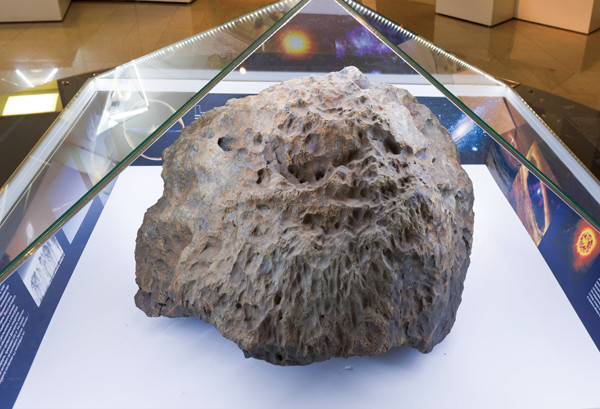
by Sara E. Pratt Tuesday, November 4, 2014

This fragment of the Chelyabinsk meteorite was retrieved from Lake Chebarkul in Russia. Credit: ©Shutterstock.com/Migel.
A new analysis of fragments of the Chelyabinsk meteorite — which burst over Chelyabinsk, Russia, in February 2013 — reveals that its parent asteroid collided with another asteroid nearly 300 million years before it struck Earth.
Shin Ozawa, a graduate student at Tohoku University in Sendai, Japan, and colleagues found the mineral jadeite, which forms at high pressures, embedded in glass in shock-melt veins within fragments of the Chelyabinsk meteorite found in Russia.
Given the mineral assemblage and calculations of the amount of time it would have taken for the minerals to solidify, the team estimates that the impacting body was at least 150 meters wide and traveling up to 1.5 kilometers per second when it collided with the Chelyabinsk parent asteroid.
“This impact might have separated the Chelyabinsk asteroid from its parent body and delivered it to the Earth,” the team wrote in Scientific Reports.
The authors wrote that understanding the asteroid’s history could help researchers better understand and monitor other near-Earth objects.
© 2008-2021. All rights reserved. Any copying, redistribution or retransmission of any of the contents of this service without the expressed written permission of the American Geosciences Institute is expressly prohibited. Click here for all copyright requests.